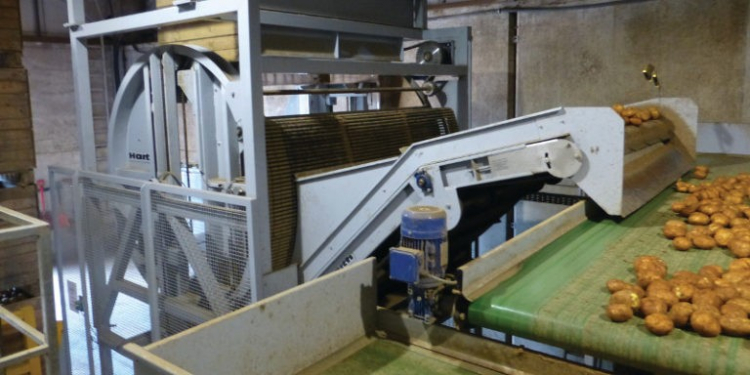Inventions on potato processing machines are aimed to a higher equipment efficiency. Potato Processing International brought two different stories. First is on getting the more efficient machine by adding new device on it and the other is on improved efficiency by reducing the features.
Key Technology is on of a global leader in the design and manufacture of process automation systems including digital sorters, conveyors, and processing equipment. This United Stated based company has recently introduced hyperspectral imaging on its popular ADR® 5 automatic defect removal system for potato strips. Featuring Chemical Imaging Technology (CIT®), an advanced value-added hyperspectral solution that evaluates the chemical composition of objects, CIT detects “sugar ends”, an invisible defect that plagues potato processors, which the ADR then cuts from the wet strips, along with all other defects, to recover the good product. ADR 5 with CIT detects and removes sugar ends and other defects from potato strips to improve product quality while maximizing yields. Key’s new CIT hyperspectral imaging module is available as an option on new ADR 5 systems and as an easy-to-implement in-field upgrade for installed ADR 5 systems.
Sugar detection
“As the world’s first hyperspectral imaging solution for potato strips, ADR with CIT brings sugar end detection to the point on the production line that can remove this troublesome defect without losing yield. ADR with CIT cuts the sugar end defect from the strip so only the defect is lost, unlike whole potato sorters with hyperspectral imaging that cause the entire potato to be redirected,” explained Marco Azzaretti, Advanced Inspection Systems Product Manager at Key Technology. “Compared to other methods being used by potato processors to manage sugar ends, ADR with CIT is the most economically efficient, preventing costly disruptions to the production process. Recognizing the enormous value in this approach, a major potato processor has already placed an order for the first system.”








